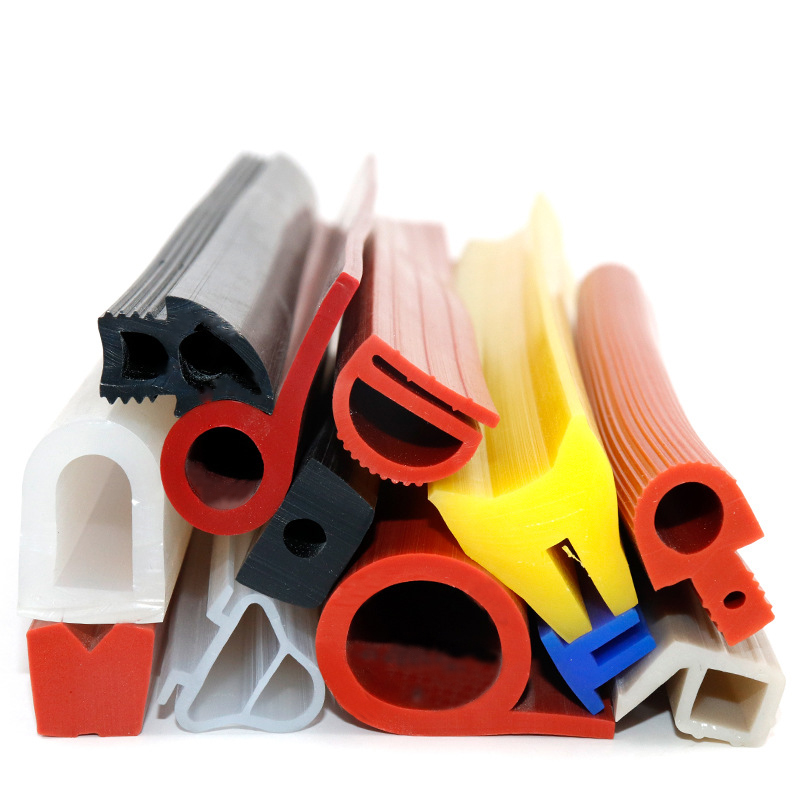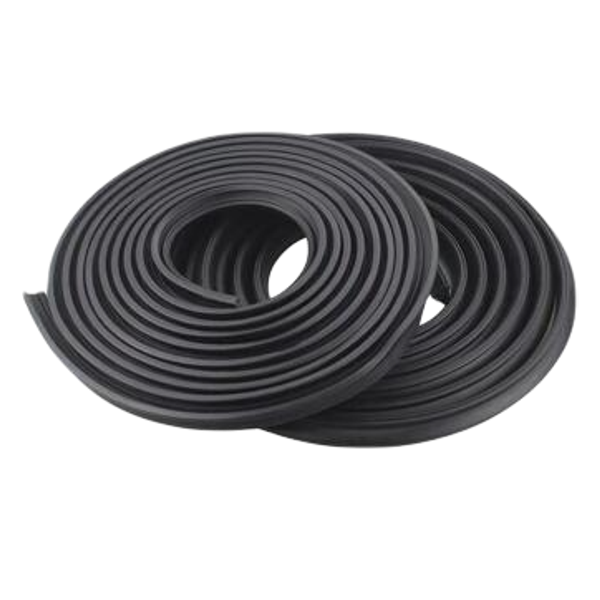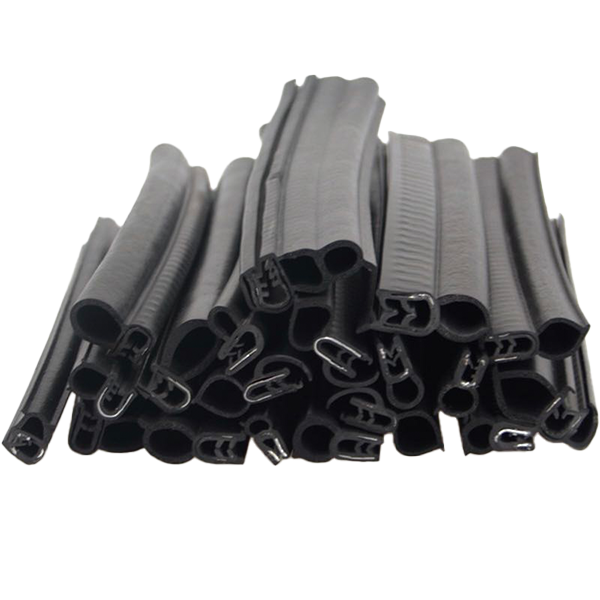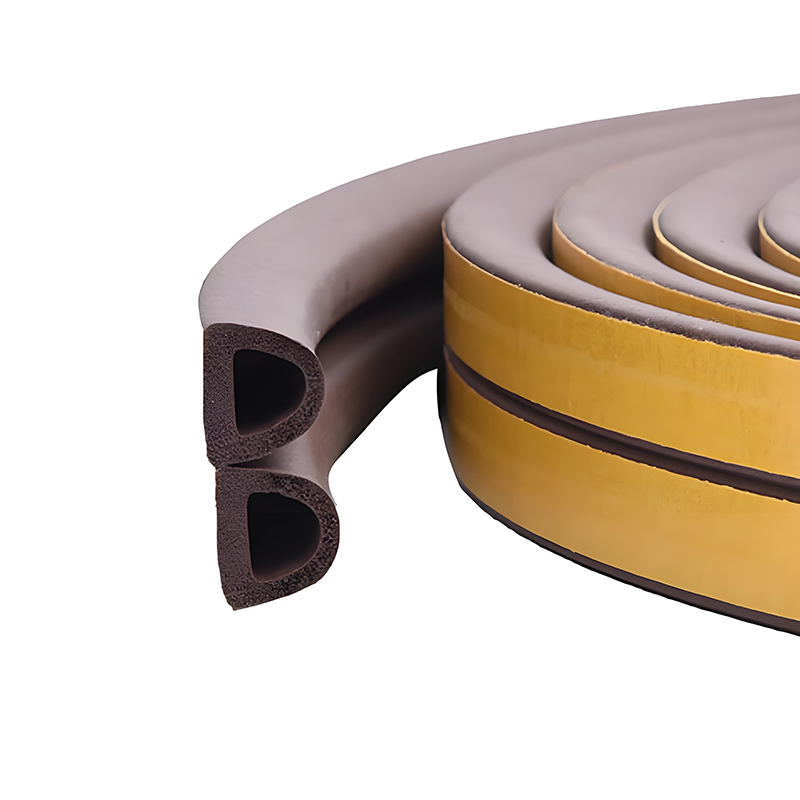Introduction and comparison of raw materials for rubber sealing strips
2025-02-20
1) EPDM sealing strip
It has excellent comprehensive performance, with ozone resistance, weather resistance, high temperature and low temperature resistance, chemical resistance, resistance to various solutes, and low relative density. The disadvantage is that it has a large expansion volume in general mineral oil and lubricating oil, and is generally a dark product. The operating temperature range is -60 to +150℃. It can be used in high temperature, cold, coastal, areas with strong ultraviolet radiation, and medium and high-rise buildings. With its wide range of applications and excellent comprehensive performance, it has been recognized by the door and window industry at home and abroad.
(2) Silicone rubber sealing strip
It has outstanding high and low temperature resistance, ozone resistance and weather resistance; it is hydrophobic and has appropriate air permeability; it has insulating properties; it can meet the sanitation level required by food hygiene requirements and can meet the requirements of various colors. The disadvantage is that the mechanical strength is poor among rubber materials and it is not oil-resistant. The operating temperature range is -100 to +300℃. It can be used in high temperature, cold, areas with strong ultraviolet radiation, and medium and high-rise buildings. (3) Neoprene Sealing Strips
Compared with other special rubbers, some of its individual properties are inferior, but the overall performance balance is good. It has excellent weather resistance, ozone resistance, heat aging resistance, oil and solvent resistance, good chemical resistance, excellent flame resistance, and good adhesion. It has poor storage stability, hardening occurs during storage, and poor cold resistance. It has a relatively high relative density. It is generally a black product. It is used in environments with oil resistance, heat resistance, and demand resistance. The operating temperature range is -30 to +120℃.
(4) Acid and alkali resistant nitrile rubber sealing strips
The main features are oil resistance and solvent resistance, but not ketone, ester, chlorinated hydrocarbon and other media, and good elasticity and mechanical properties. The disadvantage is that it is easy to age and crack in ozone and oxidation, and has poor cold resistance and low temperature resistance. Operating temperature range -30~+120℃
(5) Polyurethane rubber sealing strip It has good elasticity and excellent wear resistance, good oil resistance, wide adjustable hardness range (Shore A hardness 65~80 degrees), excellent mechanical properties (tensile strength, elongation at break), excellent cold resistance and chemical corrosion resistance, and the price of raw materials is relatively high. It is a recyclable material. It can meet the requirements of various colors.The operating temperature range is -60~+80℃. It is suitable for areas with strong vibrations such as earthquake-prone areas, near railways or factories with high-power cranes, as well as areas with strong ultraviolet radiation.
(6) Thermoplastic vulcanizate
The sealing strip has the flexibility and elasticity of rubber and can be produced by plastic processing methods without vulcanization. The waste can be recycled and reused. It is a material with a wide performance range, good heat resistance and cold resistance, low relative density, oil resistance and solvent resistance similar to chloroprene rubber, and poor compression deformation resistance and wear resistance. It can meet the requirements of various colors and has a temperature range of -40 to +150℃. It can be used in cold and medium- and high-rise buildings.
(7) Plasticized polyvinyl chloride sealing strips
The material is cheap and easy to obtain. It is resistant to corrosion, wear, acid and alkali, and various chemical media, resistant to combustion, and has high mechanical strength. The disadvantage is that the plasticizer in the system is easy to migrate, and it becomes hard and brittle over time, loses elasticity, is not resistant to aging, and has poor weather resistance and low temperature performance. It is generally a dark product.
It is suitable for occasions where the light is not strong, the temperature changes are not large, and the climatic conditions are not harsh.
(8) Surface coating material
It is to coat the surface of the sealing strip with polyurethane, silicone, polytetrafluoroethylene and other materials to replace the traditional surface flocking process. The coated sealing strip has good wear resistance and smoothness, especially the sealing strip coated with silicone surface coating, the surface friction coefficient is small, which is conducive to the sliding of doors and windows.
It is suitable for doors and windows with sliding doors and windows. It is a substitute for traditional siliconized wool strips.
Contact Us
You can contact us through the following four methods. We will respond promptly upon receiving your inquiry!
Call Us
Send Email
Message Form
Add WeChat or WhatsApp

















